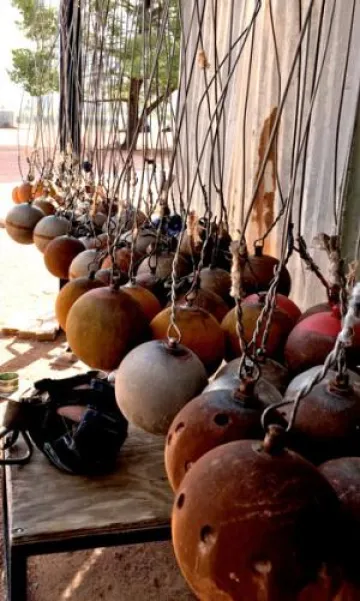How to get the gold in hammer throw: it’s physics.
We channeled Archimedes and turned the Olympics into a physics problem.

At the 2016 Summer Olympics in Rio de Janeiro this month, athletes from all over the world will stand inside a seven-foot-wide circle, launch into a whirling blur of motion, and send a 16-pound iron ball on a steel cable hurling across the field in Engenhão. Whoever throws it the farthest, wins.
According to Brian LeRoy, University of Arizona associate professor of physics, taking home the gold in the hammer throw requires three things from athletes: throw as close to 45 degrees as possible, spin faster, and keep arms fully extended.
LeRoy says, theoretically, throwing the hammer at a 45-degree angle is ideal. “It’s a trade-off between how far outwards and how far upwards the hammer goes.”
“But I’d be curious to see if athletes think about things like angles. I wonder if they think about it in terms of physics,” says LeRoy. “You should definitely ask a hammer thrower about this,” says LeRoy.
So we did.

Grayson Fleming is a junior electrical engineering major at the University of Arizona. He’s been hammer throwing for three years, and he does, in fact, think about it in terms of physics. “Theoretically, the optimal angle would be 45 degrees. With things like air resistance in play, it may be closer to 42 degrees, but if you start thinking about that during your throw, it’s almost certainly not going to go well.”
“It takes a lot of practice, patience, and time to master the event,” says Fleming. “You do thousands of throws, and you can only really focus on one or two things when you’re inside that ring.”
Before the throw itself, athletes spin, a hallmark of the event.
Says LeRoy, “Each time they rotate around the circle, they’re accelerating,” and subsequently, increasing velocity, which increases distance of the throw. Olympians tend to spin five times before throwing. In that case, why not spin six, or even seven, times? There’s no rule against it.
Fleming reminds us that theory and practice are two different things: “You can do anything you want inside the circle. You have one minute to throw, and a good throw typically only takes one or two seconds, but most people can only fit in three or four turns. Some people can fit five.”
“You start at the back of the circle and you end at the front, so you’re actually progressing forward as you rotate. For most people, if you do more than four or five [rotations], you’re eventually going to step outside of the circle,” which is against the rules, says Fleming.
Then, there’s the arms. LeRoy references the equation for centripetal acceleration, explaining that a bigger radius gets you a farther throw. Translation: A thrower whose arms are longer when extended will have a leg up on opponents.
Mathematics aside, “You can usually tell to a certain extent if you’ve done well, especially if it’s a really good throw. It feels faster and smoother…just better,” says Fleming.
“When I came to the UA, I gave [hammer throw] a whirl, and I just liked it a lot. It’s fun, it’s good exercise, and it really helps in my physics classes, with Newtonian mechanics and all that.”
In the end, it all comes down to physics.

